Duck Netting
Duck Netting is cultivated in the Imperial Preserves in Saitama Prefecture, preserving a tradition since the Meji-Period.
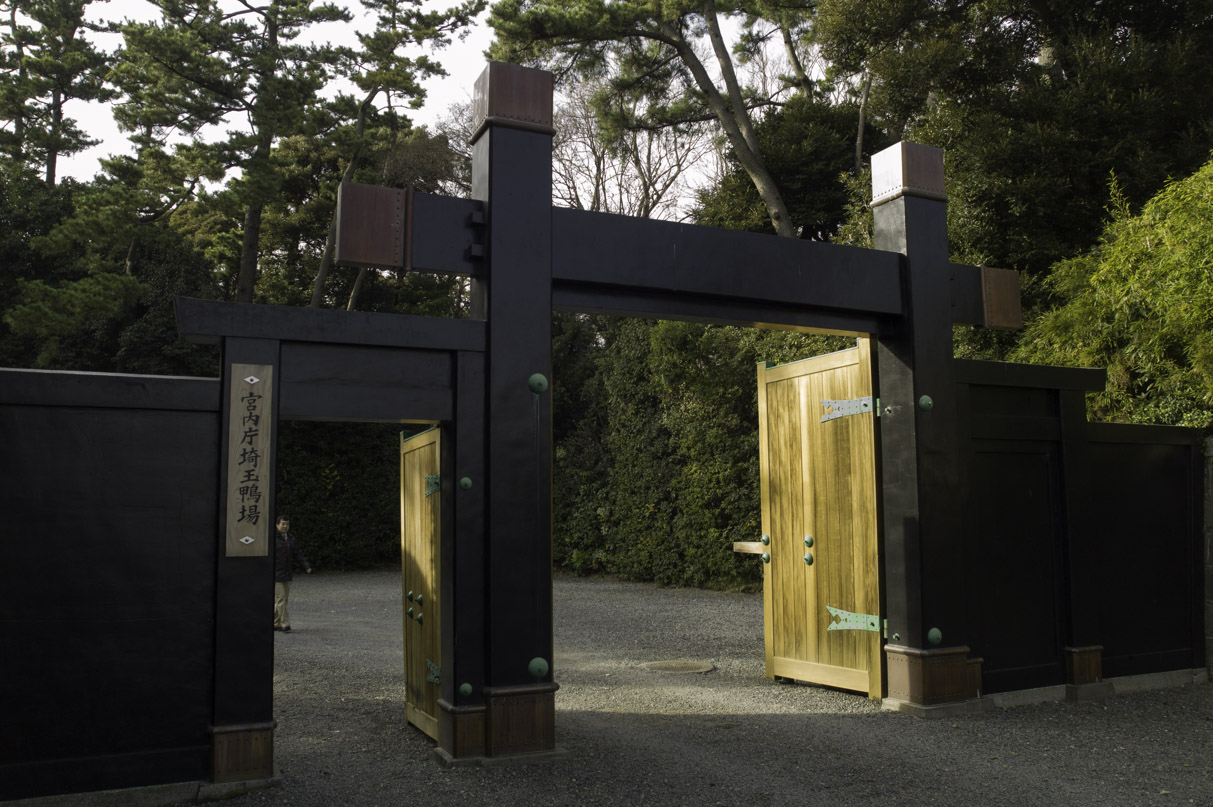 ,
,
The Imperial Houshold administrates two preserves with an area of about 120.000 and 195.000 square meters in Chiba and Saitama-Prefecture. These pictures were taken at the site in Koshigaya (Saitama) about 29 km north of Tokyo. The estate has two building to accomodate visitors.
These buildings are about 100 years old. Before the Meji-restoration (1868) ducks were hunted by falconry or hawking. Since the turn of the century duck-netting has been introduced with the intention to monitor the migration of the birds by systematically marking them. From August to early May around 3000 arrive from northern areas such as Siberia, the US and Canada.
Preparation for the duck-netting included the proper outfit and an introduction into the way we were supposed to conduct the netting itself, using dummies for illustration.
The following painting photographed in one of the rooms illustrates the proceeding.
Ducks are attracted through wooden clapping to enter a small canal from the main lake. The wild ducks are led by trained decoys, which are domestic ducks. They are lured further into the canal with some food while the “netting squad” is hiding behind a small hill. The team consists of 5 people on each side who will silently and simultaneously move from the right and left side to the canal and on one command approach the canal. Their suprising appearance makes the ducks to fly out of the canal and are supposed to be caught by scoop-nets. Before starting we were told to read carefully the instructions on the board and change to the proper outfit, espec. putting on grey coats to avoid early detection through bright colours.
We walked to the netting grounds through a bamboo forest and lined up in a row of five on each side in front of one canal. Helpers lined up to stay behind us in the second row to take the netted ducks in to their custody.
Hearing the clapping the staff fed the entering ducks and observed how many ducks entered. First calling us closer and asking for silence the game leader then indicated how many ducks entered to be netted.
So five ducks to catch ! And we were silently running towards the canal.
One caught ! The poor duck was handed over to one of the staff to be taken care of.
The two teams continued the netting for about one hour, walking forth and back between six different canals. After the escape of the wild ducks the domestic ones remained and enjoyed the food.
In all 46 ducks were netted which was a low number as not too many ducks were in the preserve at this specific day.The ducks were kept in wooden boxes and then brought for marking to the main place.
The ducks were immobilized by turning their wings which gave them a very odd appearance.
Out of the 46 ducks 16 had not been marked yet. After marking the ducks were set free.
According to a survey by the Yamashina Institute for Ornithology several years back 329 ducks of 6 species marked and released at the two Imperial Preserves were recovered in Siberia and North America. Of those ducks 234 were pintails, 41 mallards and 27 european pochards.
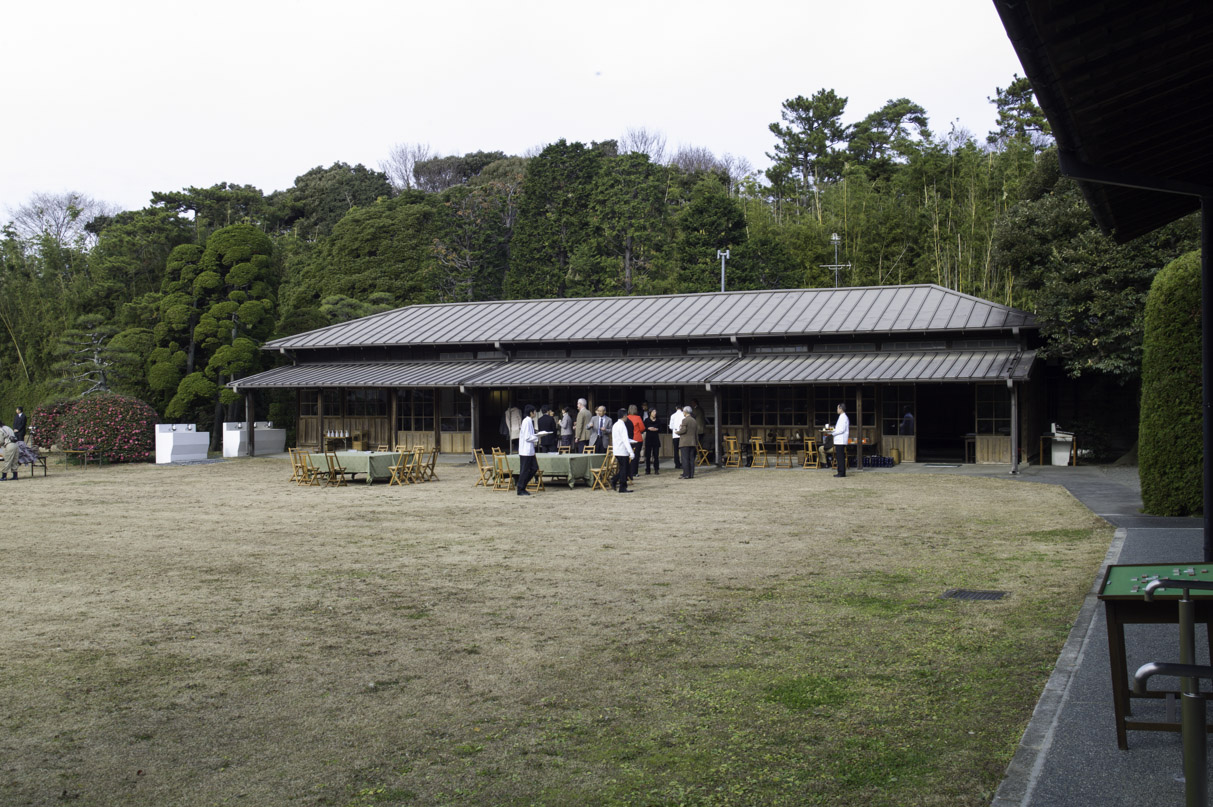
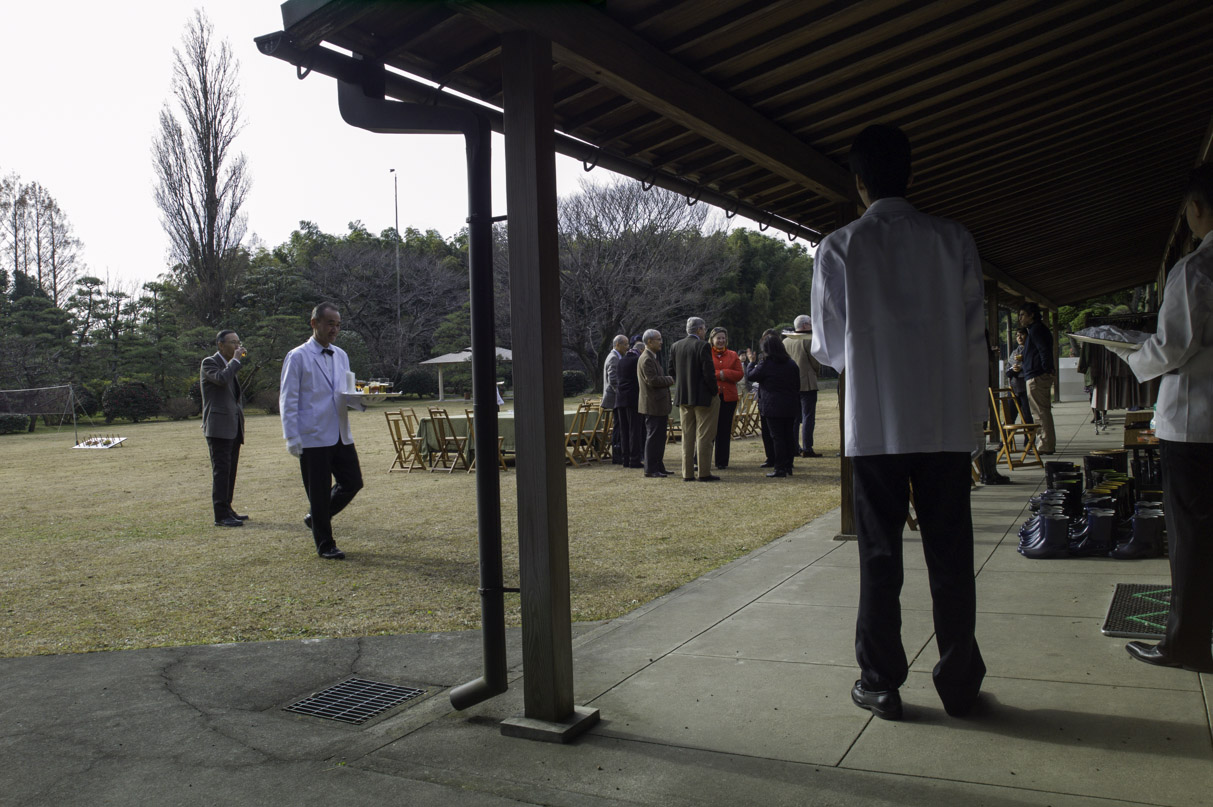
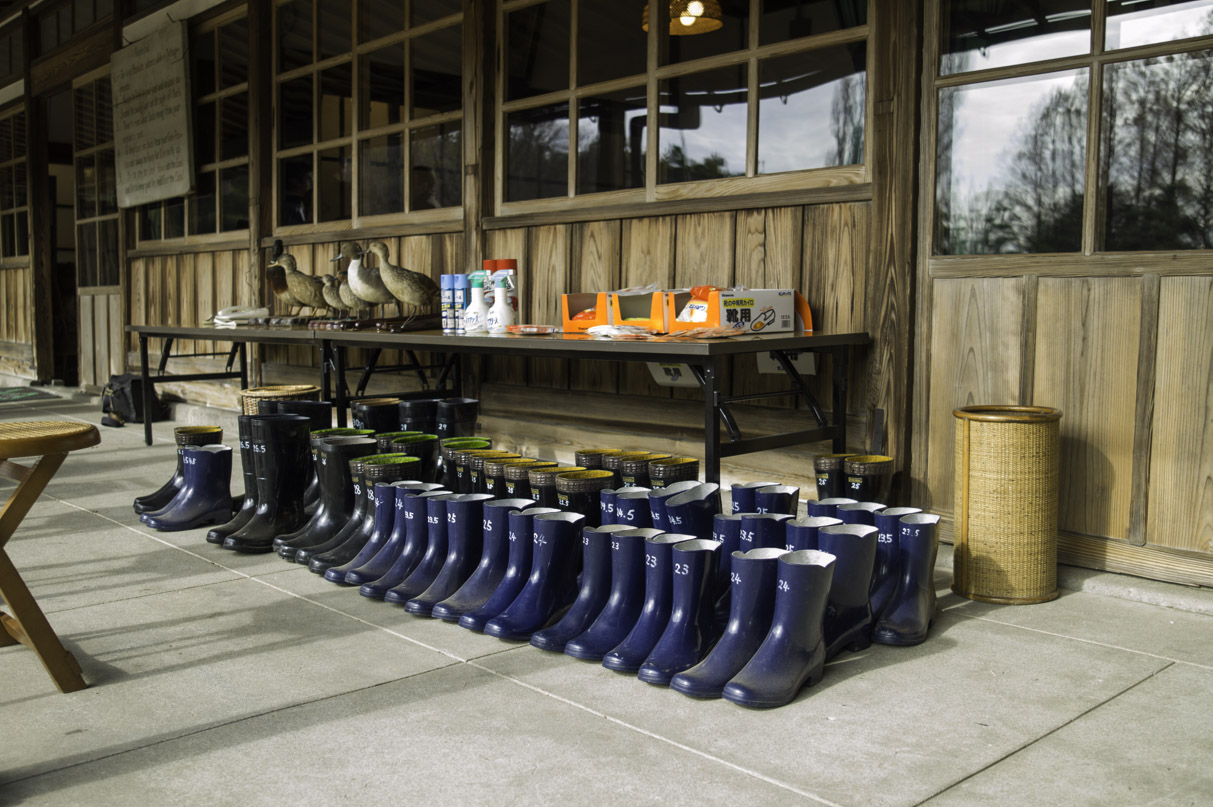
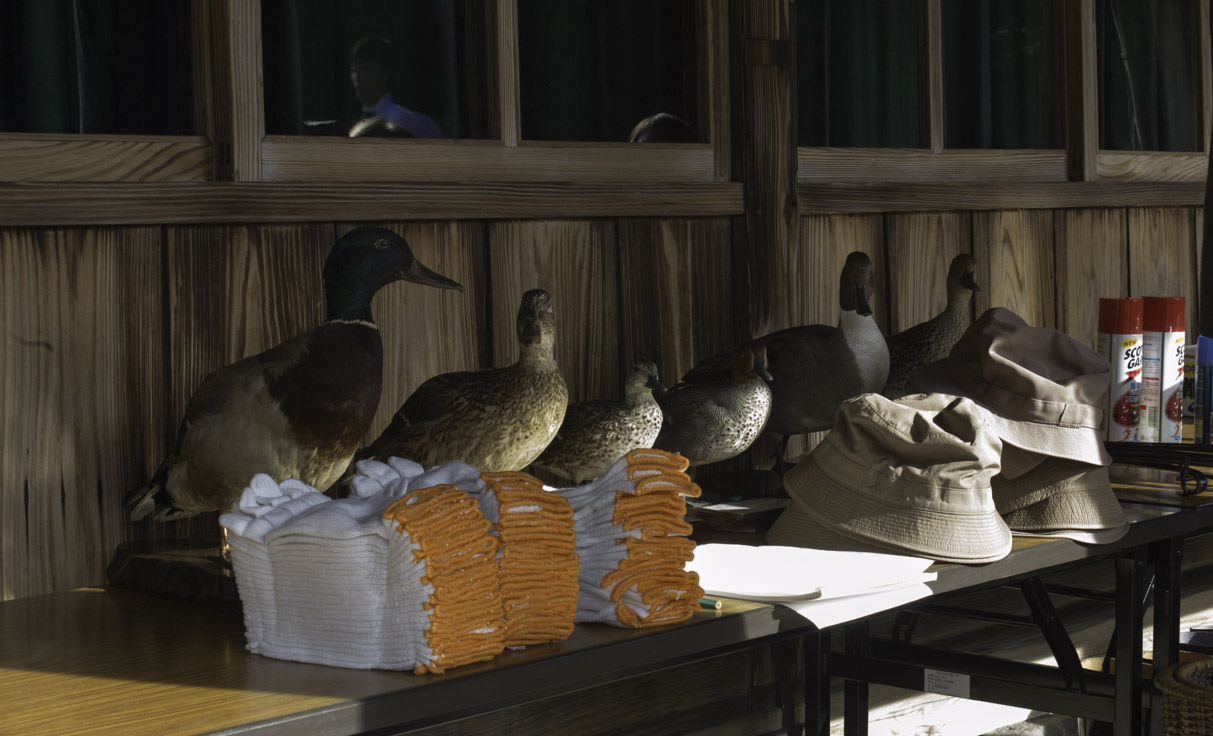
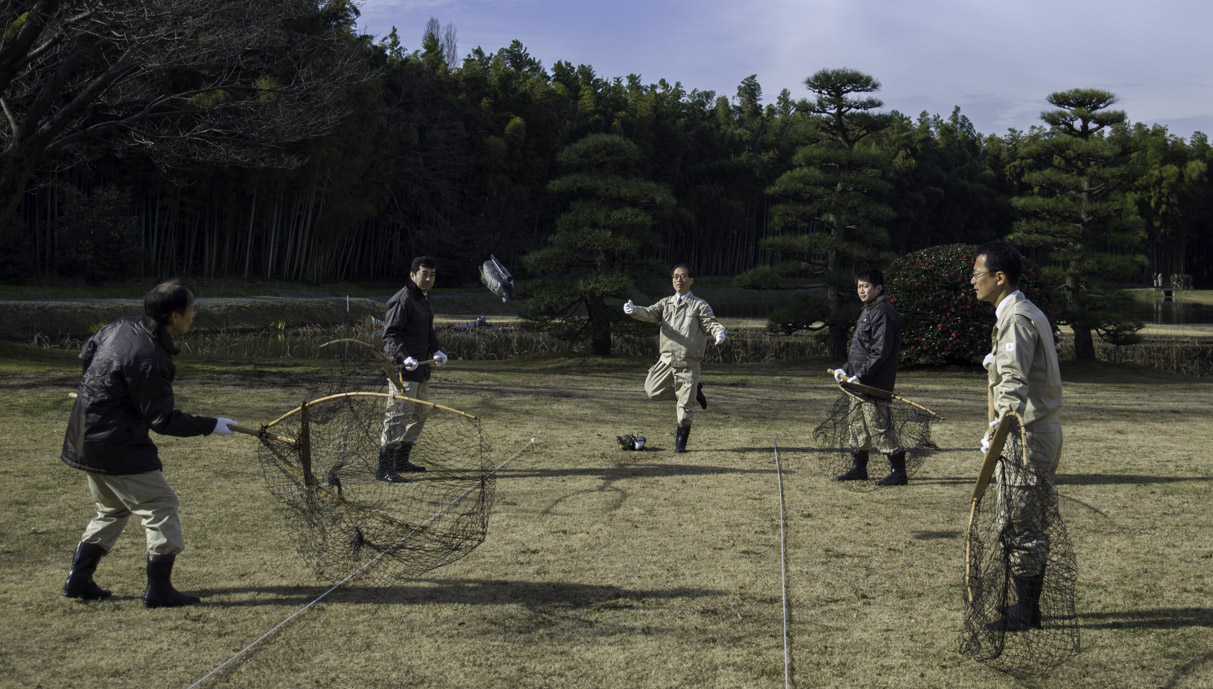
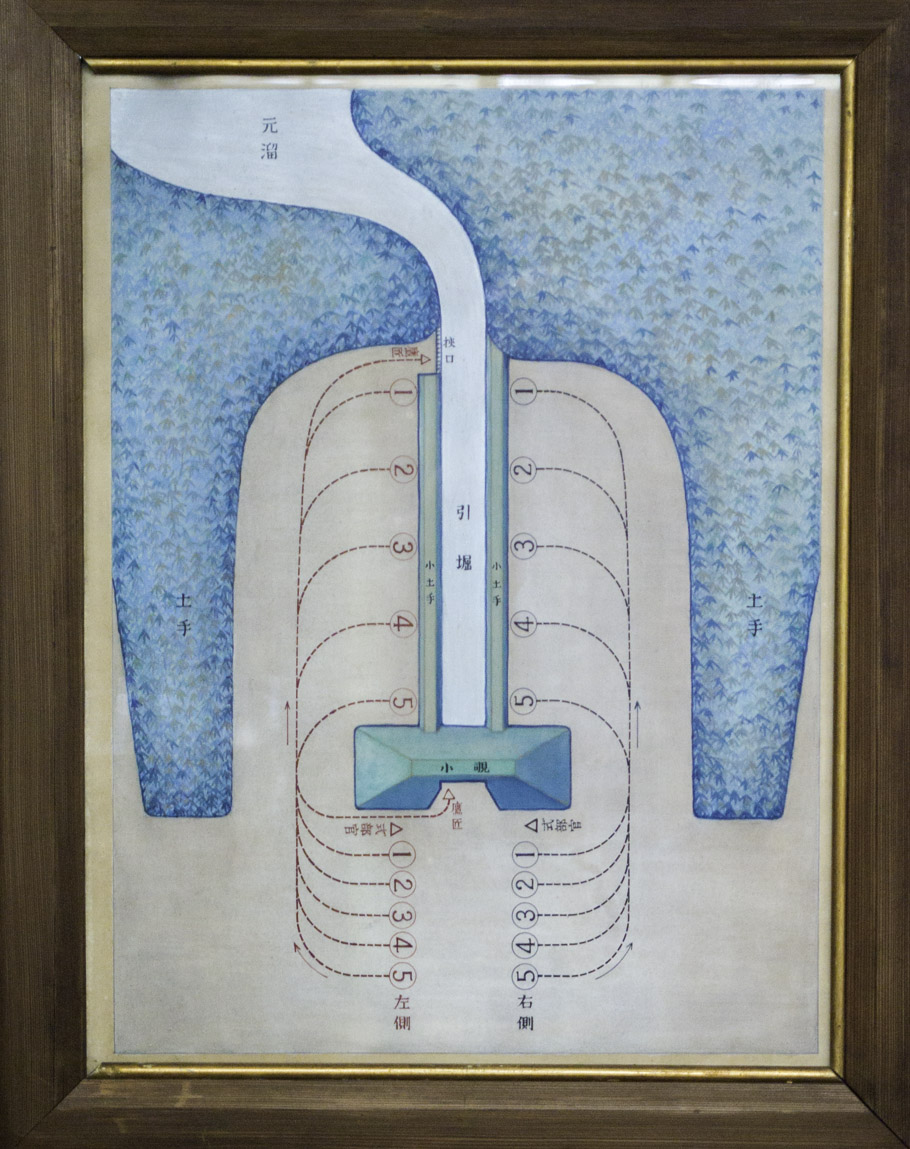
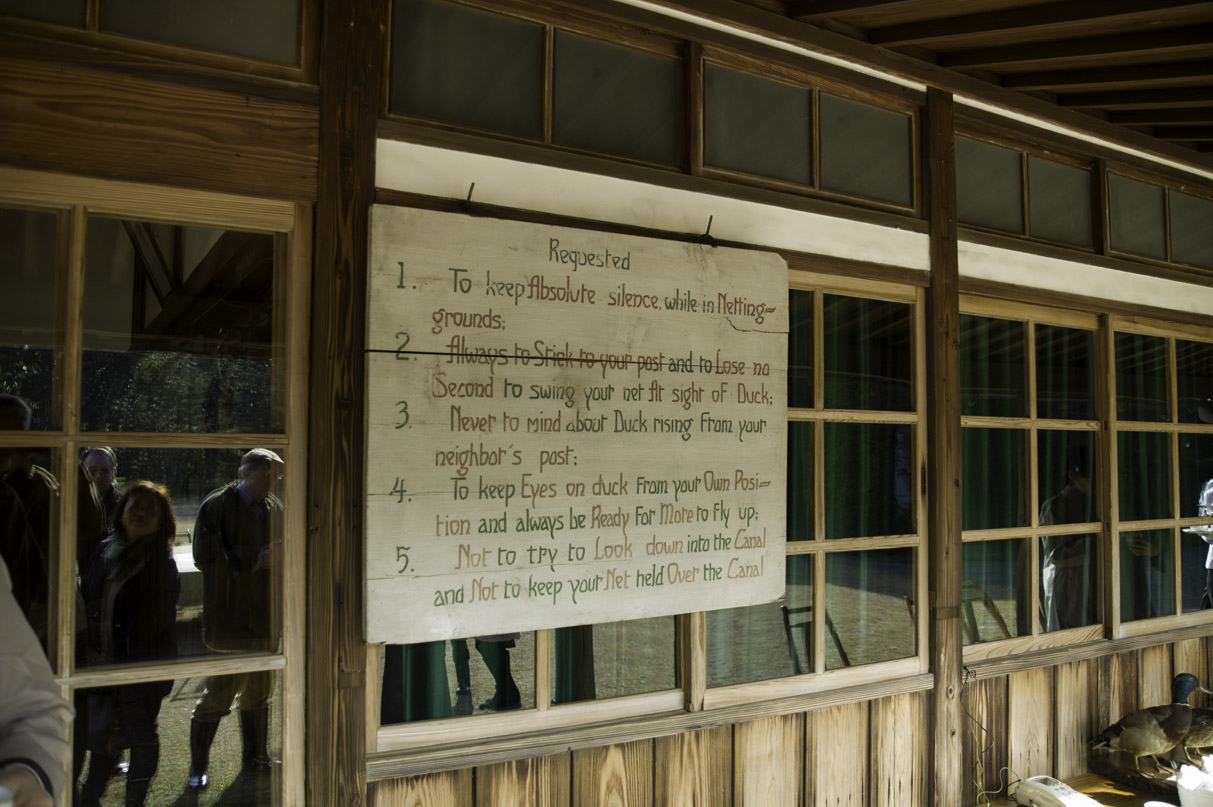
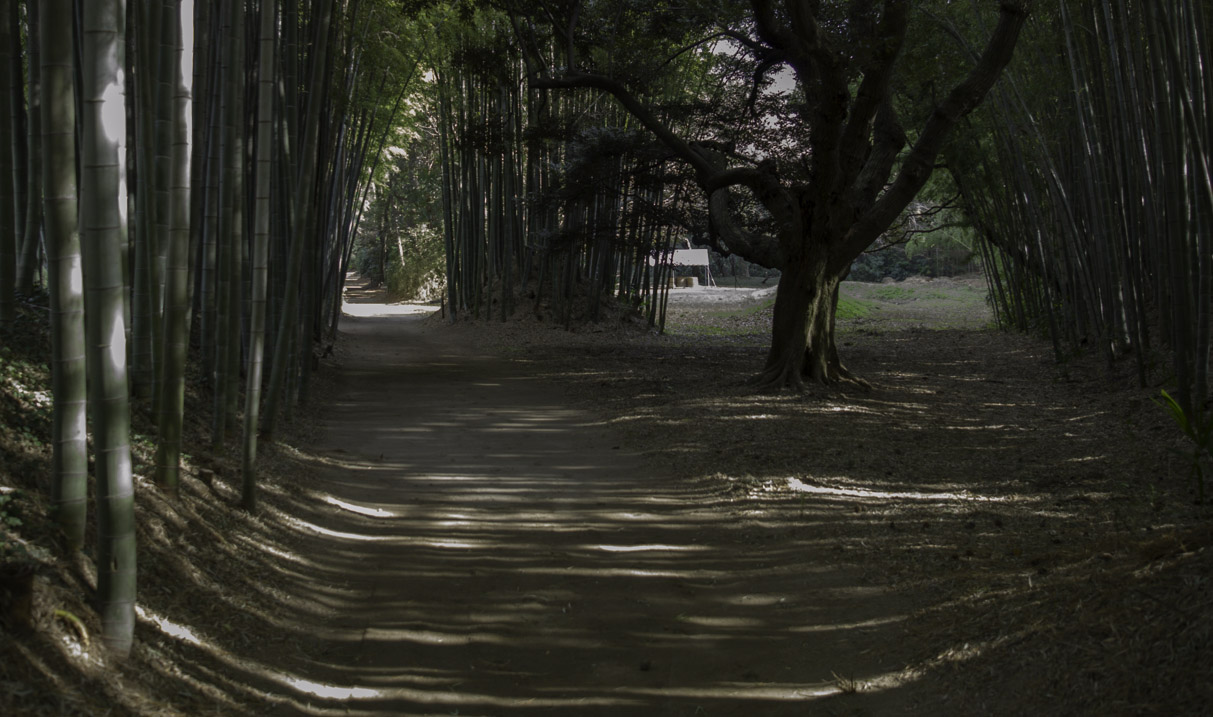
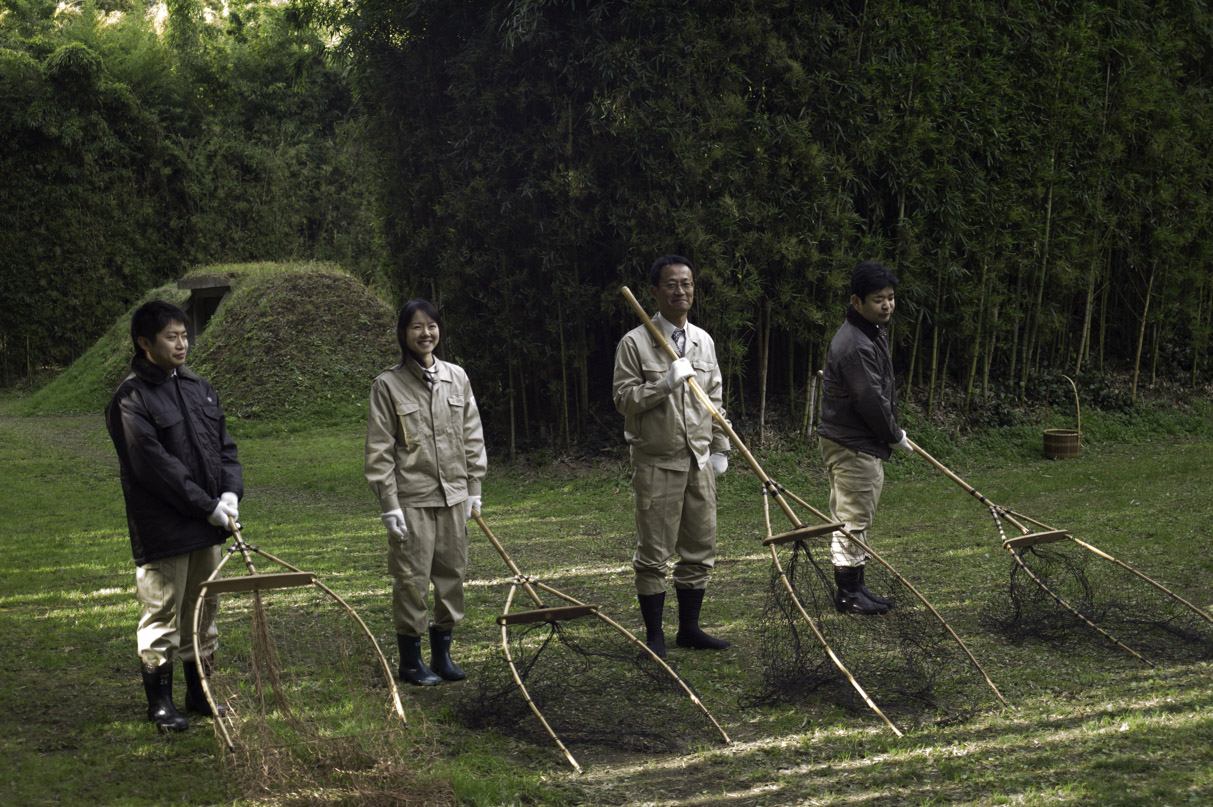
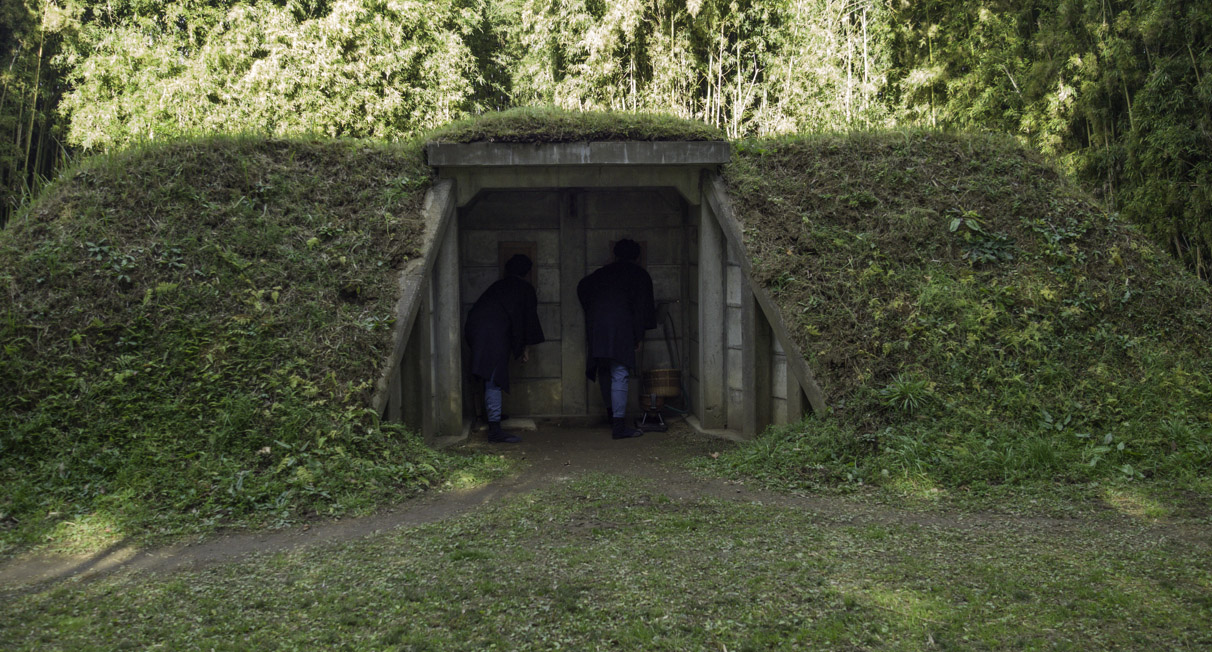
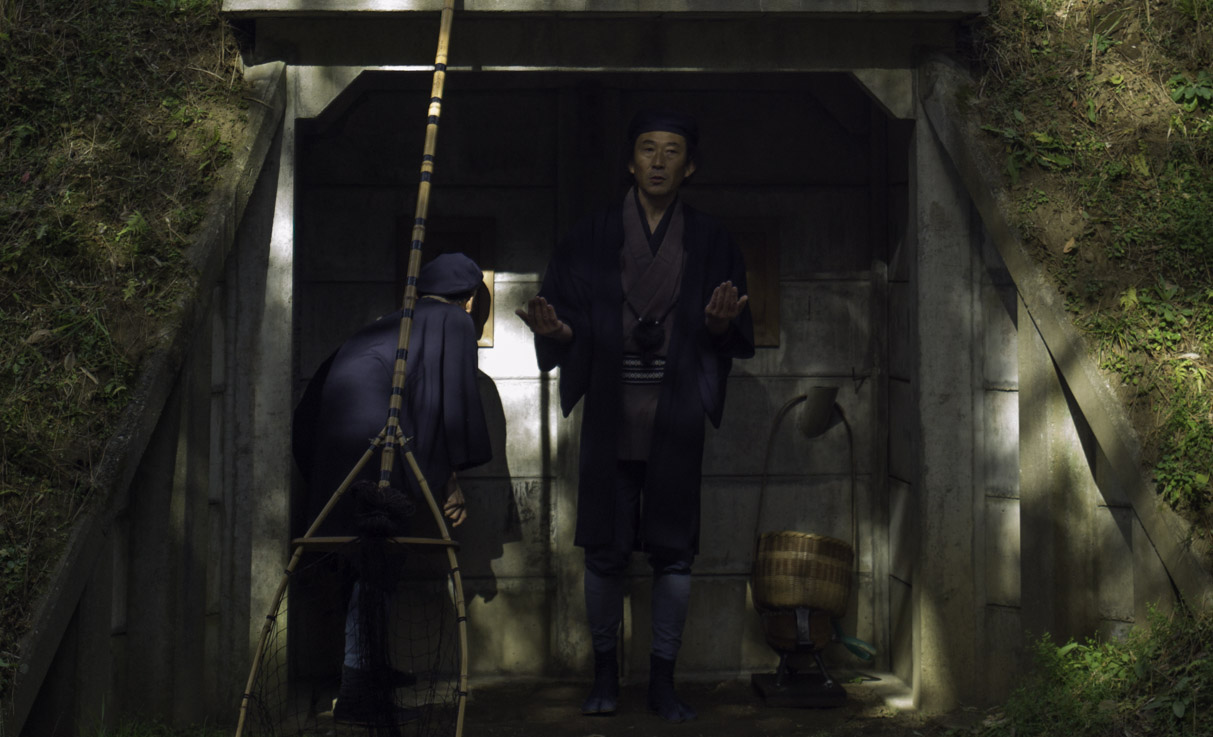
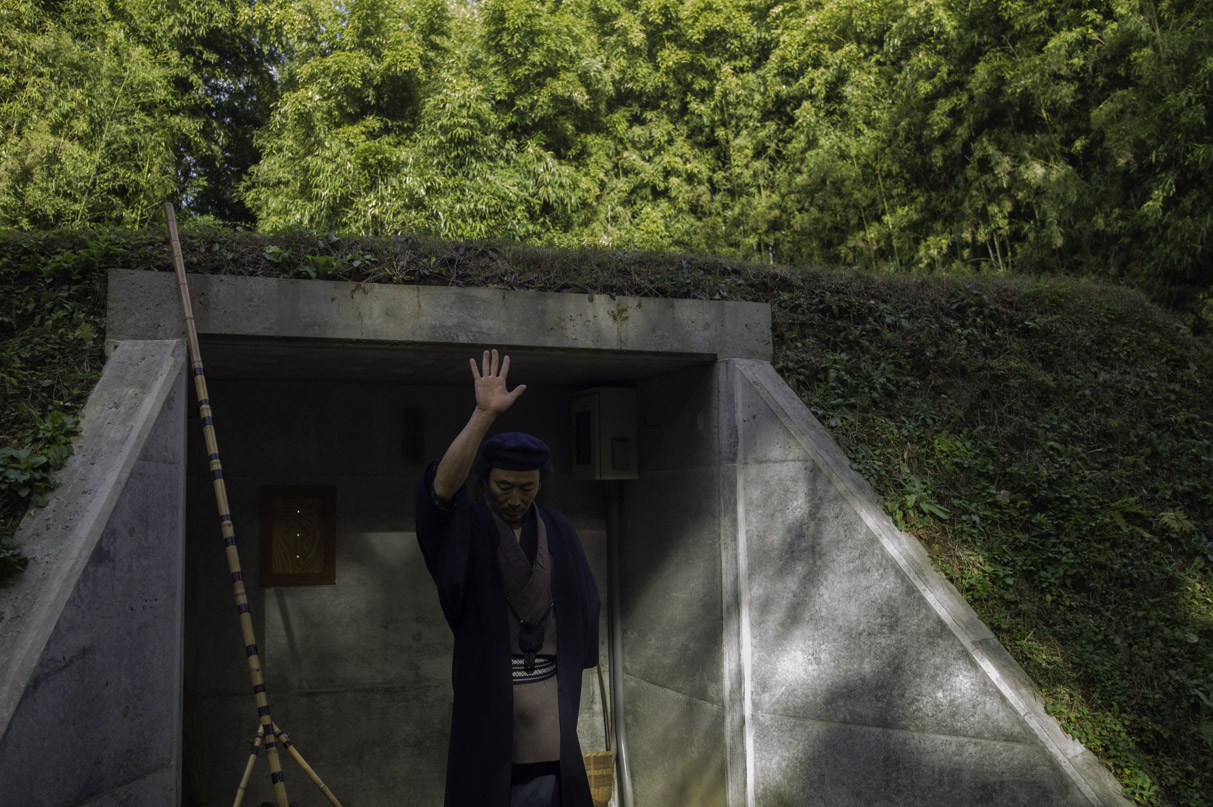
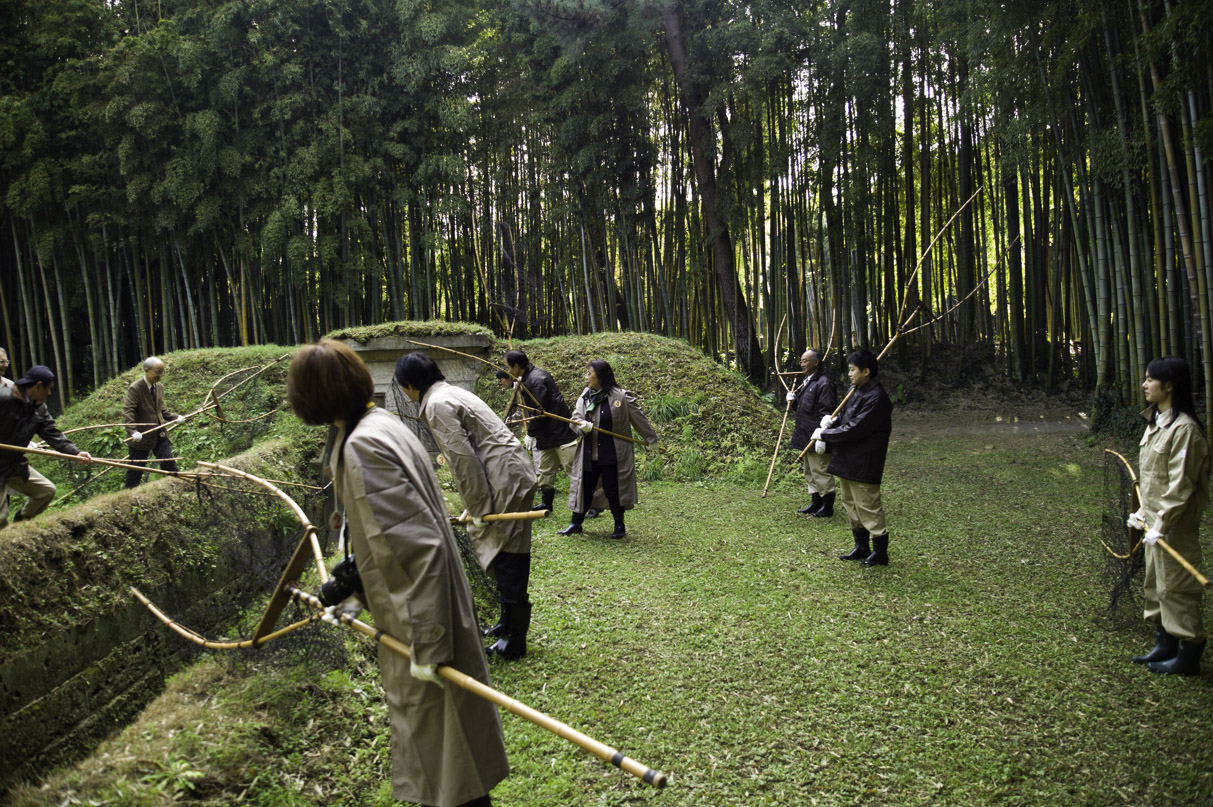
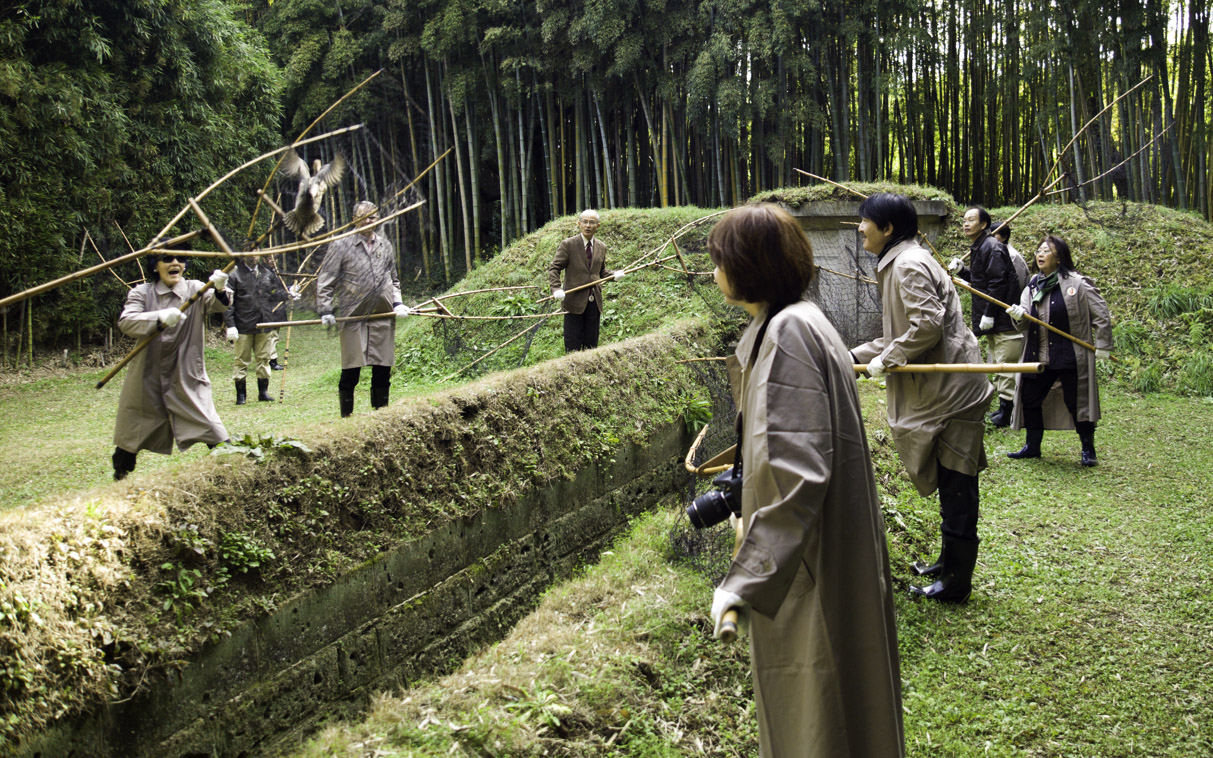
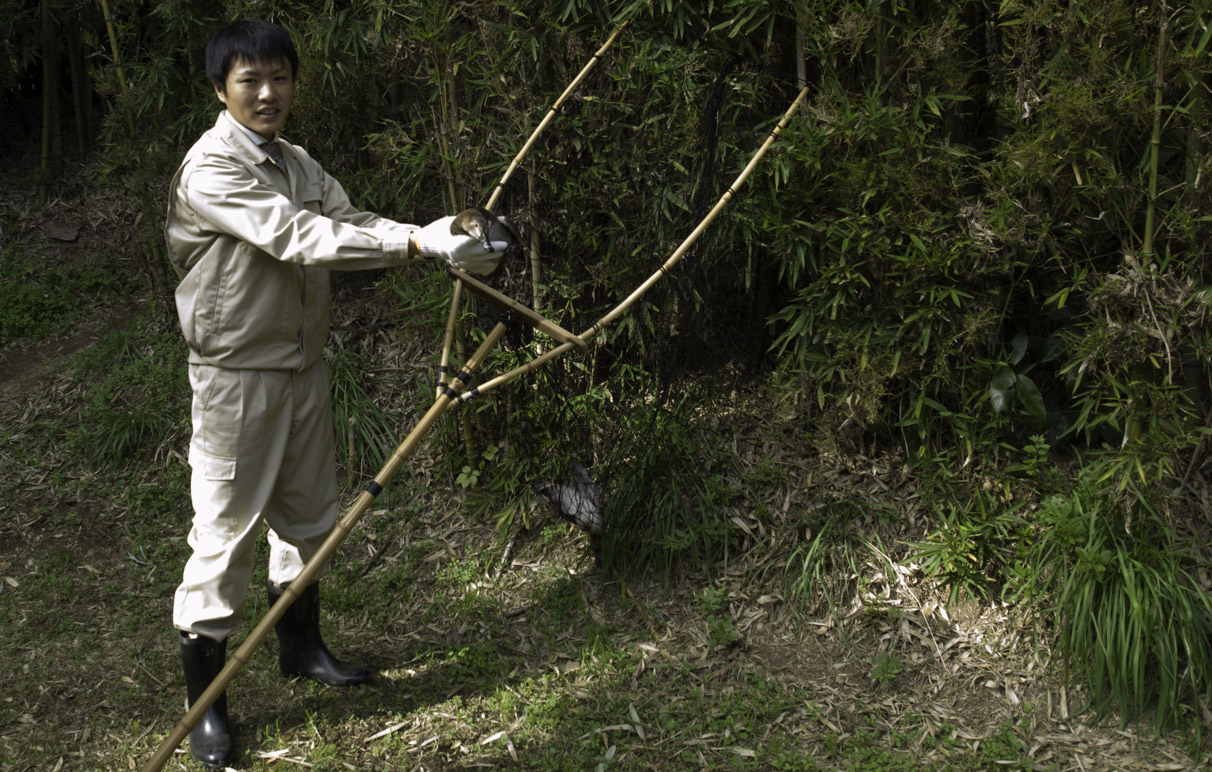
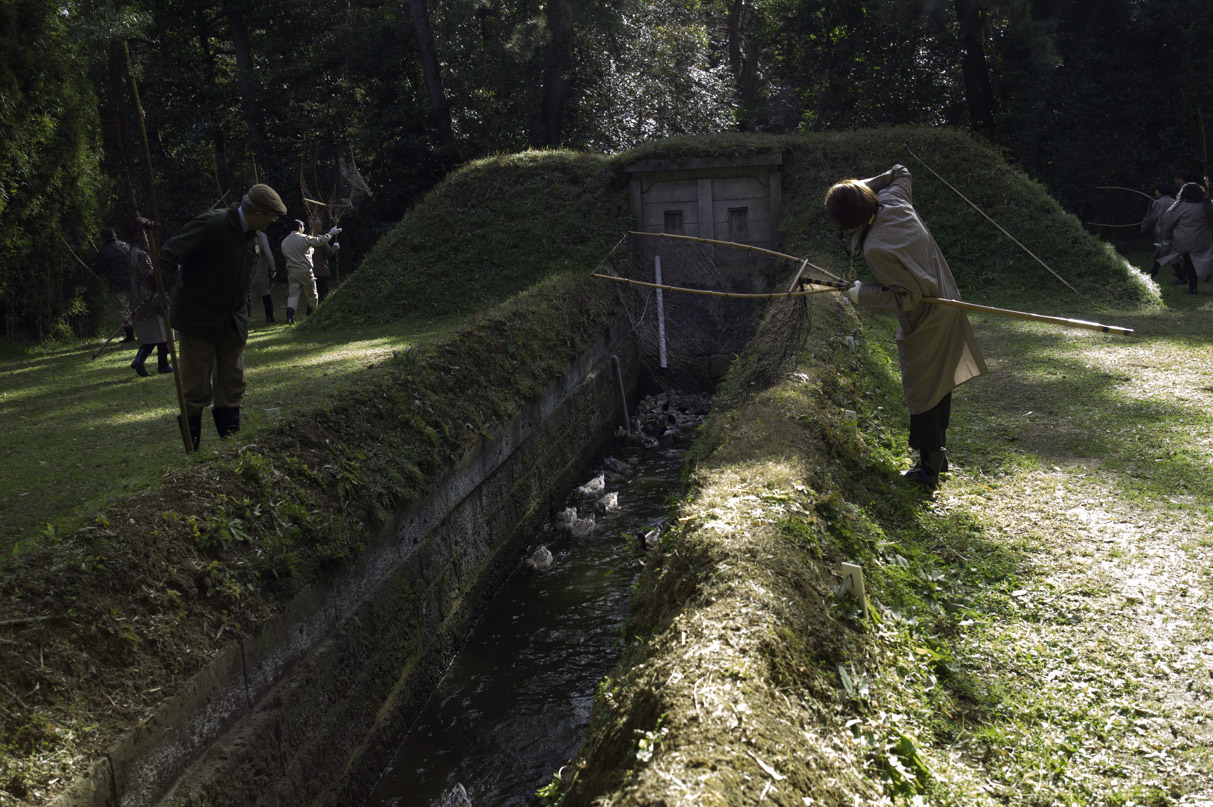
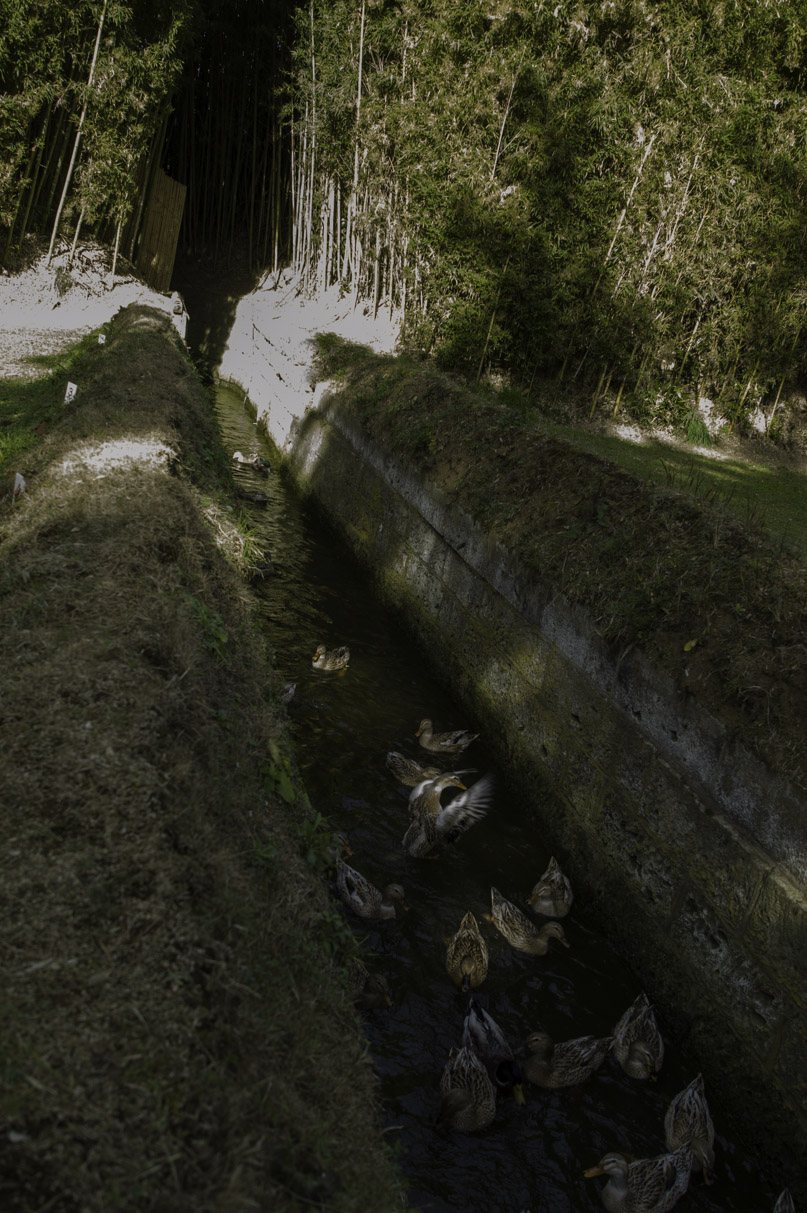
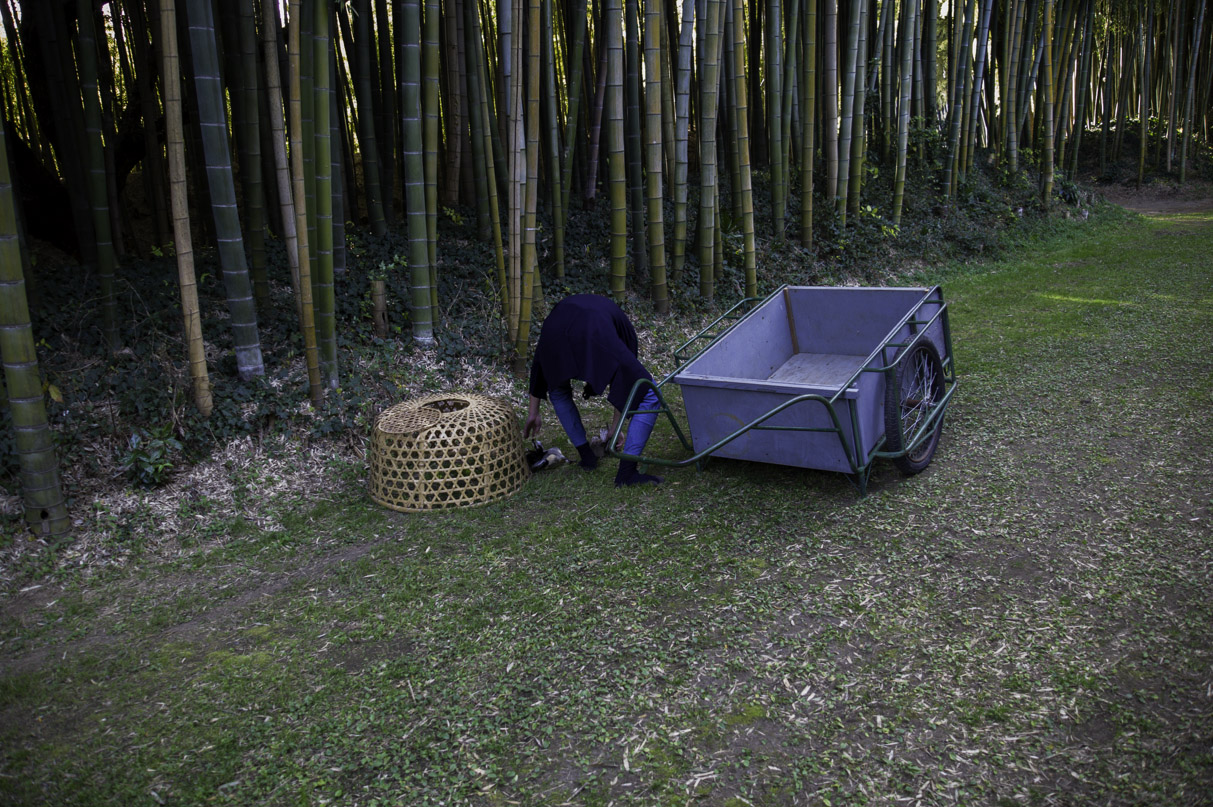
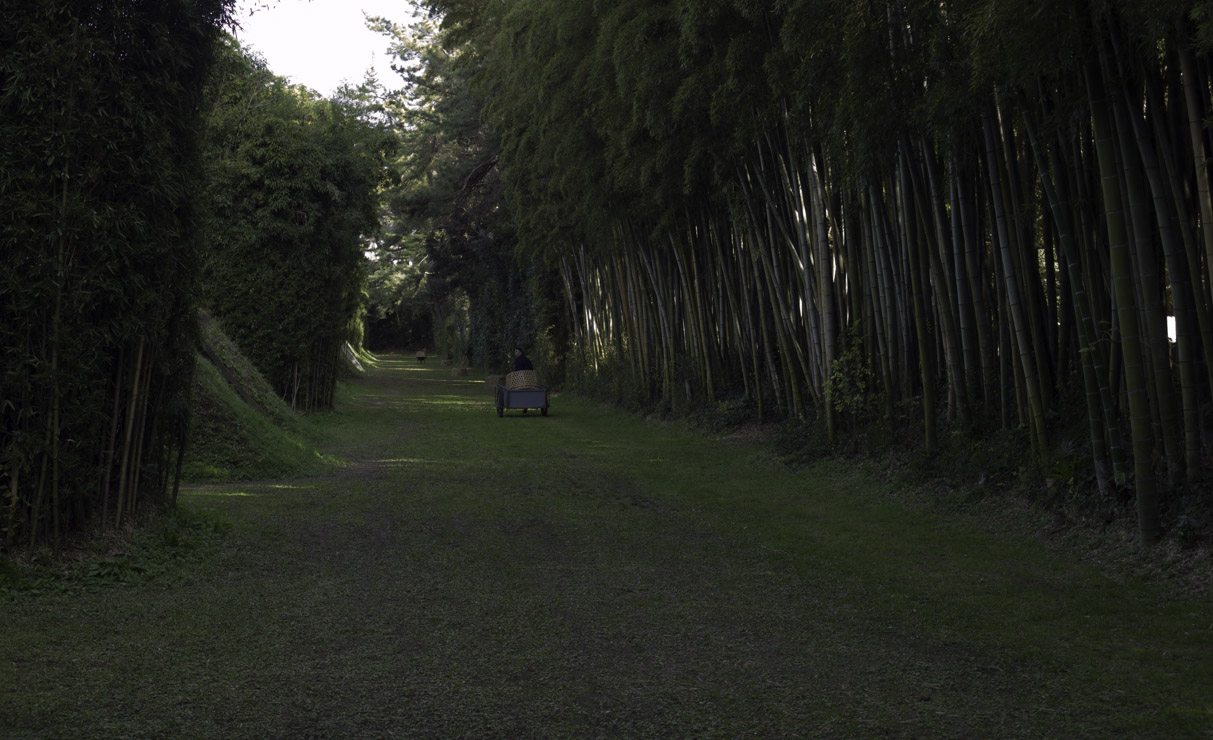
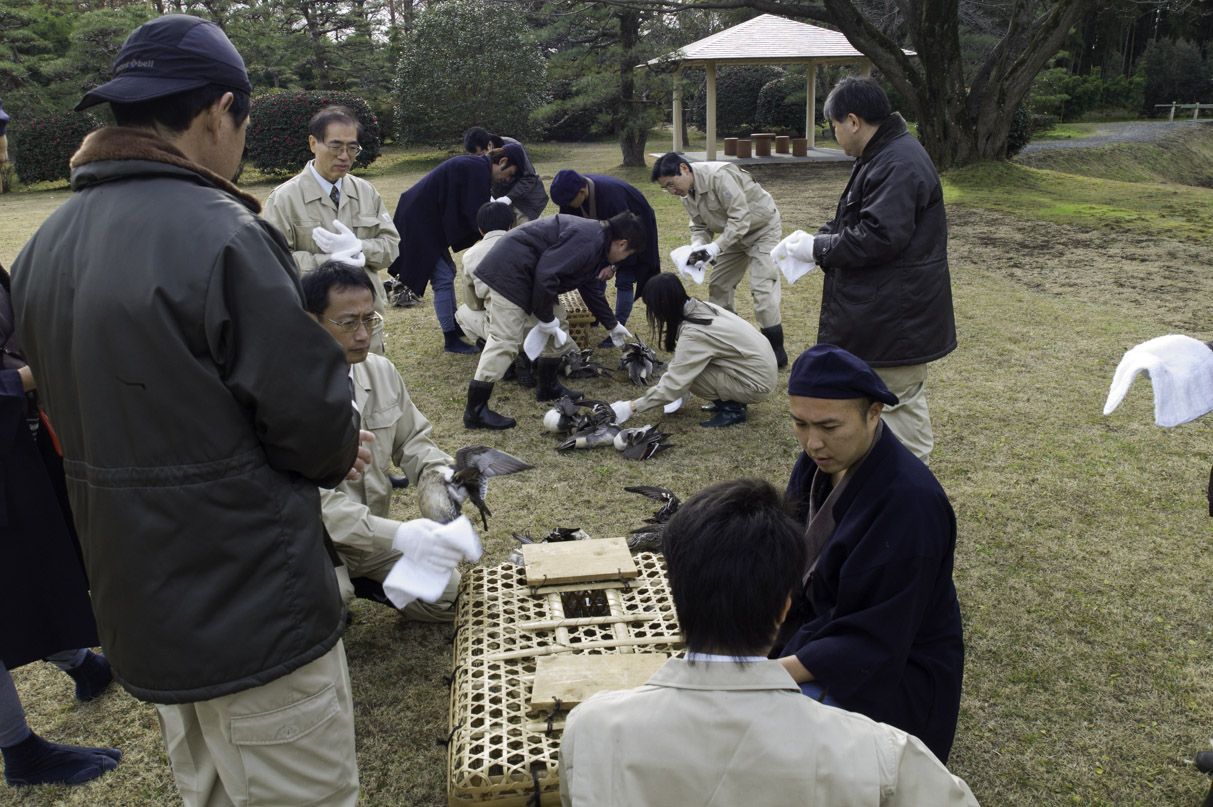
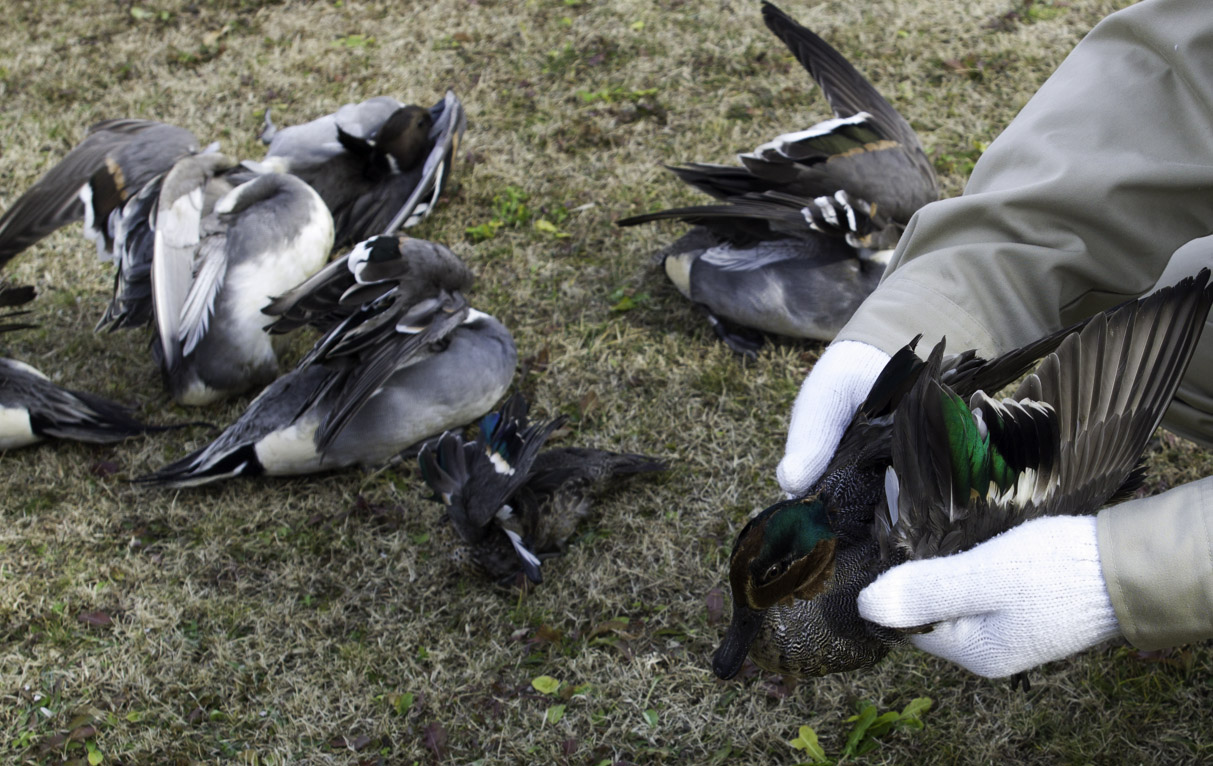
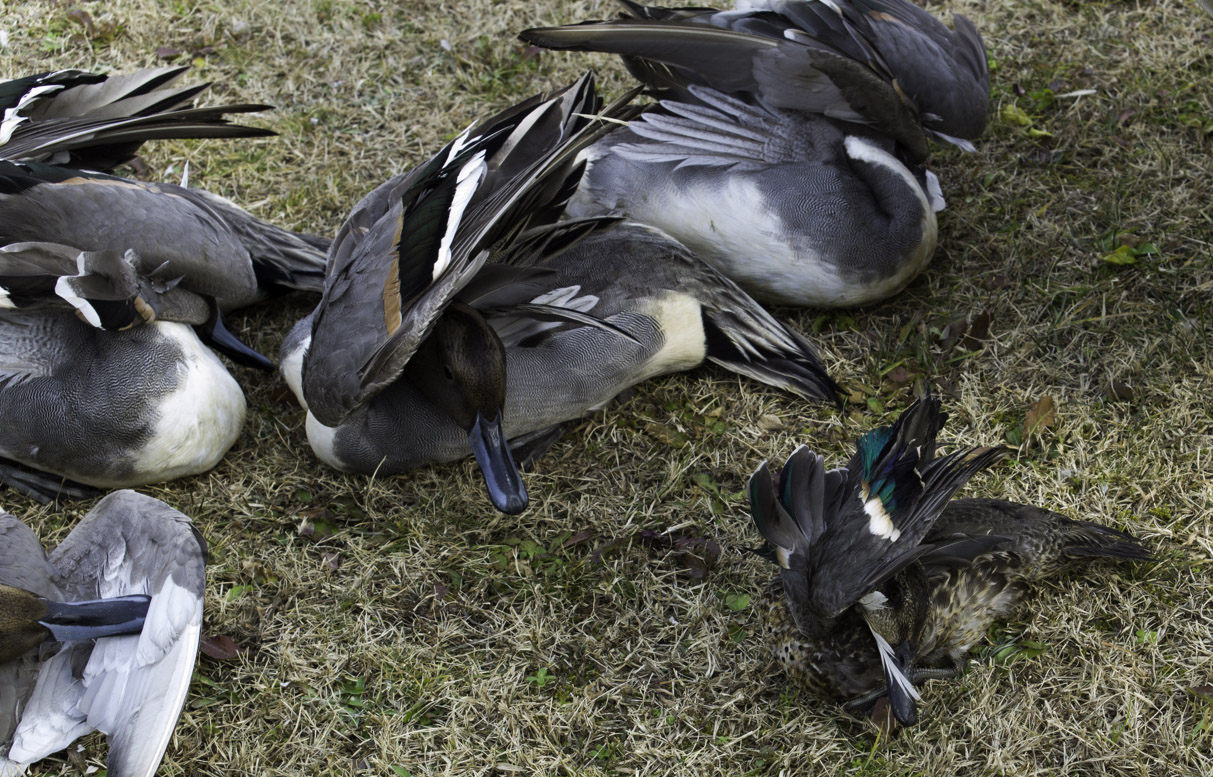
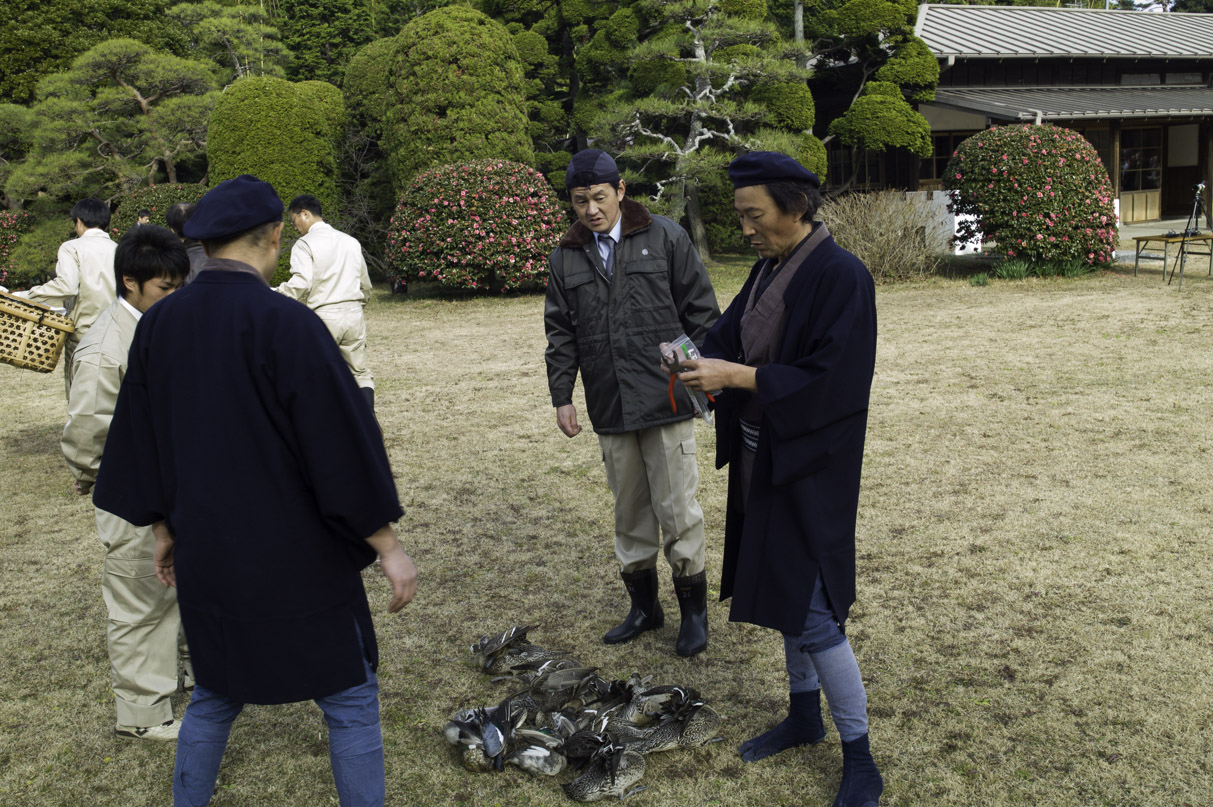
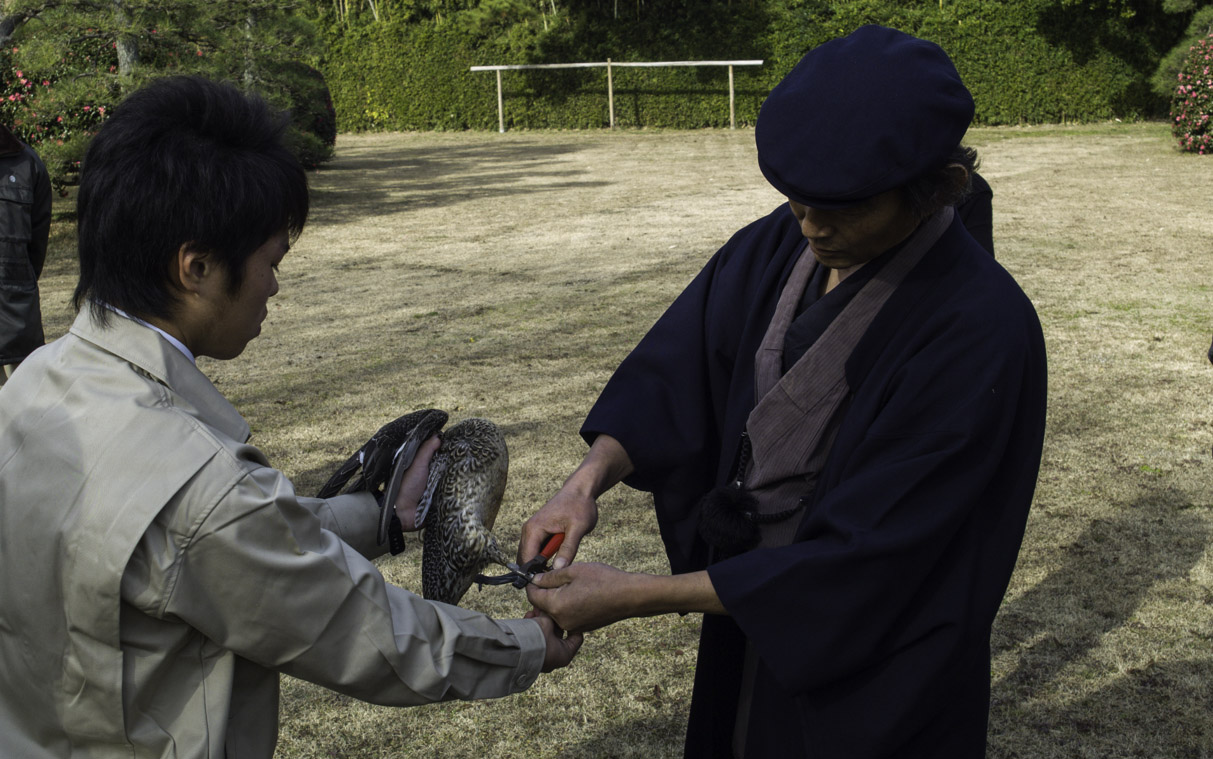
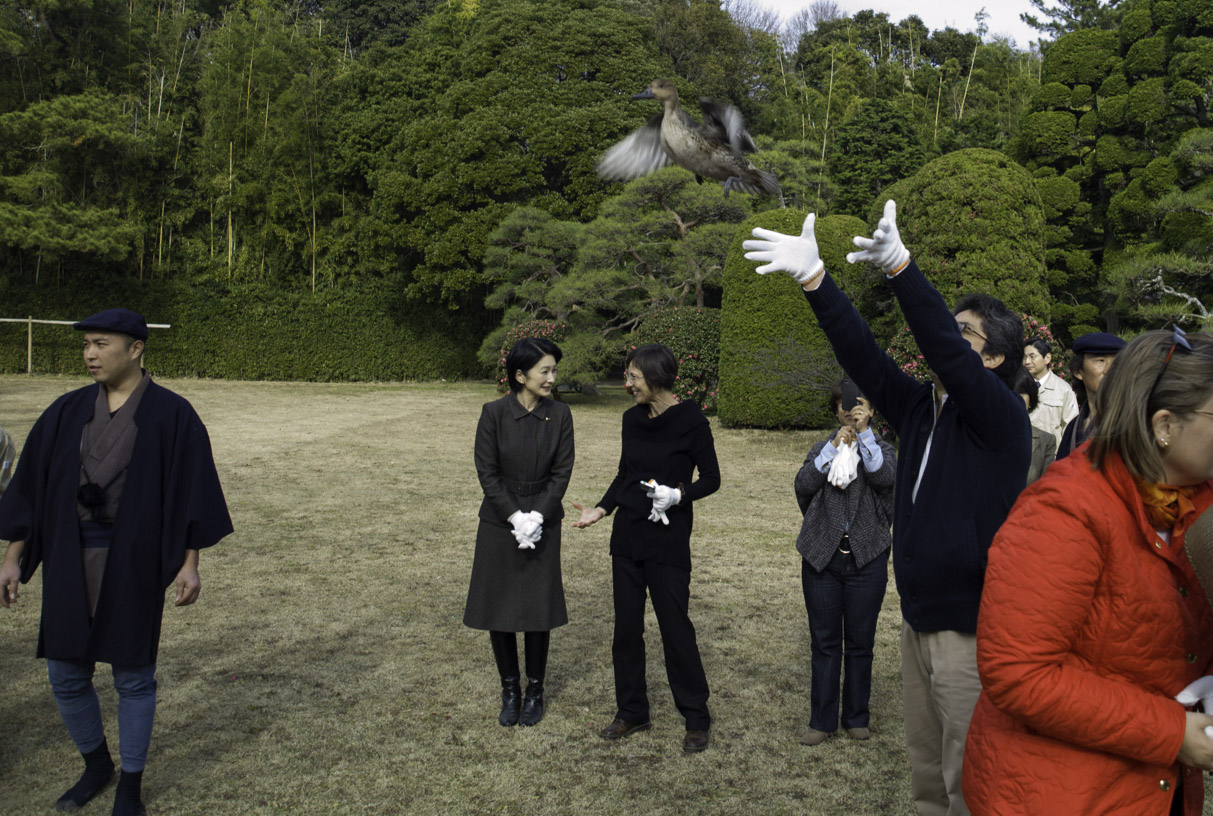
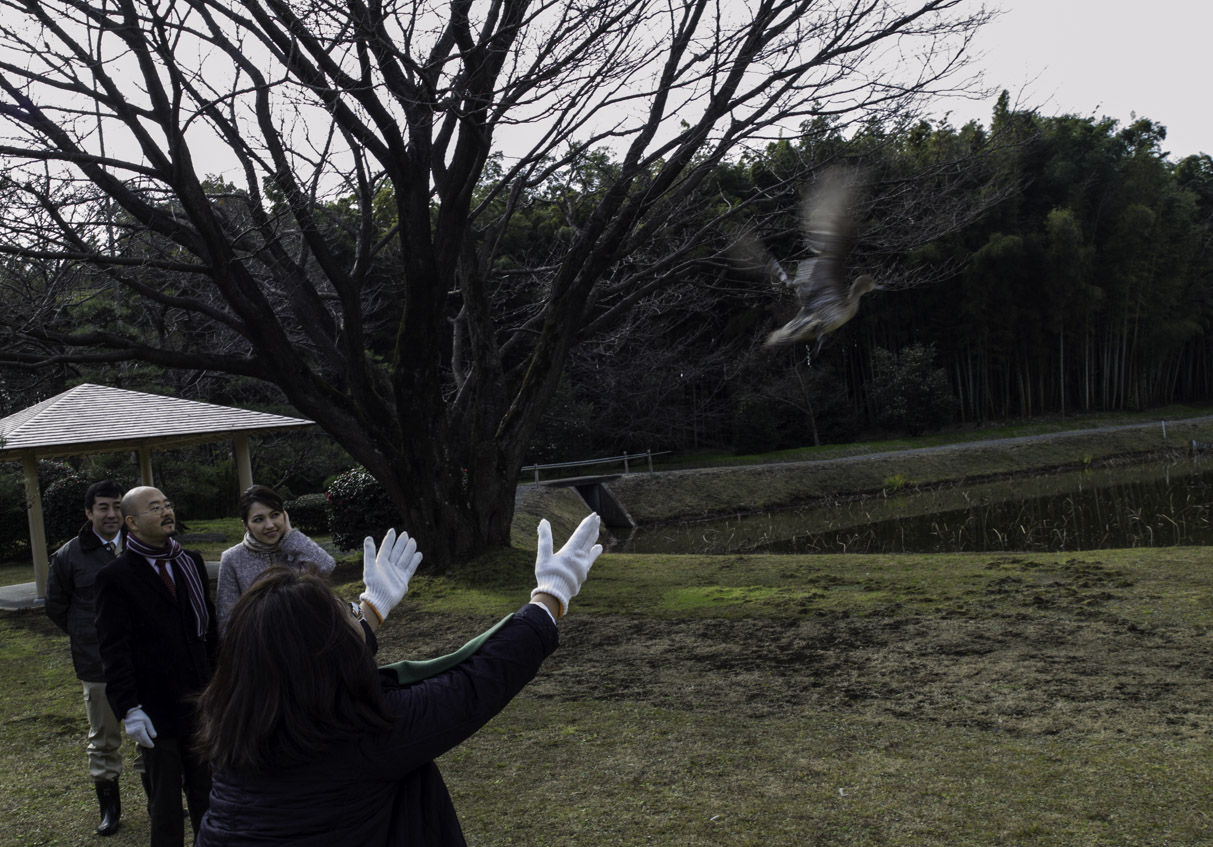
Leave a Reply